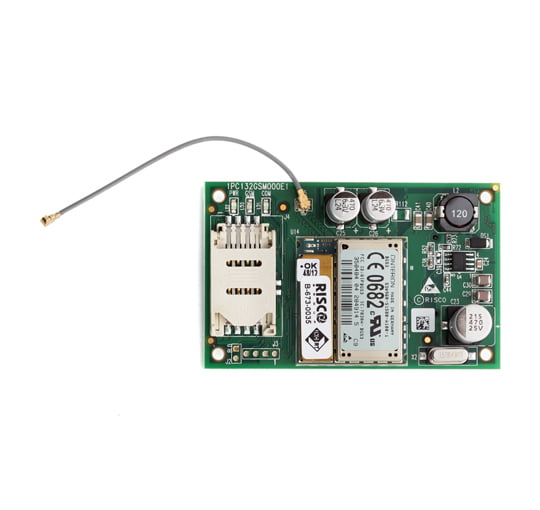The team has only managed the feat on nail clippings so far,
but they hope the process could one day be used to securely carry
information on fingertips.Yoshio Hayasaki of the University of
Tokushima and his colleagues said a single fingernail could accommodate
approximately 800 kilobytes of data. That would not provide room for a
high-resolution photo, but would be enough to store basic
identification information.Hayasaki and his team achieve the
feat by using a laser that delivers very short pulses of infrared light
onto a finely focused spot, they report in Optics Express1. When
the nail is illuminated with blue laser light to excite fluorescence,
recorded dots appear brighter than the material surrounding them,
allowing the information to be read under a microscope.Because
it is possible to adjust the depth of the writing, they say several
layers of information can be superimposed within a single slab.
Fingernails Next Biometric
DmS 2040 Indoor Dome
Building on the success of the highly acclaimed ruggedised 2060 outdoor dome, the 2040 presents a familiar user interface, with a feature set and price point designed to address the competitive internal dome camera market. Key features of the new 2040 dome include: a high quality colour camera offering x18 optical zoom; up to 24 enhanced privacy zones; an optically correct hemisphere and a robust internal die-cast mechanism supporting quick install and release for hot-swap replacement. The 2040 is supported with a full range of ceiling and pendant mounting options. “The acquisition of Dennard has allowed us to fine-tune the interface between our DVRs and domes, a fact underlined by the recent decision to promote both sets of products under the Dedicated Micros banner.
Crow Selling Alarm Panels With Integrated GPRS For 550
Not only is the new low cost Crow GPRS/GSM alarm reporting product, the PowerLink, going to be onboard in the company’s own alarm panels, there’s also a new module (the CrowLink) that will interface to every other alarm panel available on the market.
This means installers taking advantage of loyalty rates from their suppliers, as well as those installers who are simply too comfortable with their current offerings to bother switching brands, will still benefit from Crow’s latest developments.
Another key characteristic of the new CrowLink GPRS/GSM device is that when a module is attached to an existing alarm panel it allows bureau installers to change their monitoring provider at any time without having to reprogram every panel.
Perhaps most importantly, the new Crow product means no end user need miss out on the advantages of GPRS alarm monitoring. Regular readers of SEM will be well aware of our feelings for GPRS and GSM monitoring.

And as telephone users embrace mobile formats wholeheartedly it remains hard to understand the alarm industry’s practice of continuing to cling to the PSTN dialler reporting path. It’s not just that we think the dialler is clunky 30-year old technology, there’s also something old fashioned about the way dialler comms functions in relation to alarm monitoring deals, full-stop.
Quite simply, the way things have been working for the last 3 decades virtually guarantees end users won’t get a particularly good deal for their 30 bucks a month.
Having said that, it’s impossible to fault the reliability of dialler comms and it’s true the speed of dialler processing has definitely improved over the past 15 years or so. But the fact end users pay not only for their monitoring service but also for every individual call their alarm panel makes to a monitoring station guarantees that inherent security levels provided by dialler-driven alarm panels remains low.
The guts of the issue is that more phone calls (higher polling rates) mean higher levels of security and with dialler that means much more cost. Using what is essentially a wireless Internet comms path with a fixed monthly cost, GPRS polling of panel status can take place almost as often as the end user requires – every 90 second if desired. Try that with dialler comms and the end user will get hit for a local call every 90 seconds, 24 x 7. That’s 960 local calls per day at 30 cents per call – a total cost of $8840 per month.

Such costs ensure that end users usually ask for weekly alarm polling and if the alarm has been taken out by the simple expedient of chopping the phone line, no one will be the wiser for up to 7 whole days. While Crow is by no means the first company to look seriously at GPRS, it is the first company to attempt to bring this technology to every single monitored line. It’s doing this by leveraging the company’s inherent design capabilities along with the quickfire development path provided by Crow’s inhouse manufacturing team at Arrowhead in NZ.
As we’ve pointed out a number of times before, Crow’s ability to churn out extremely capable product at very competitive prices has made it one of the most dynamic alarm companies of the past 5 years. There’s been no development of a hero product like a big alarm/access panel – instead the company seems to specialise in getting the basics right. It was inevitable then, that this quick-footed development capability and a competitive pricing strategy would eventually be applied to an alarm panel reporting upgrade. As it turns out that’s exactly what has happened. Developing the Link According to Crow’s Vince Robbie, Crow has been looking at GSM and GPRS for some time, with developments in both NZ and Israel.

As Robbie explains, the technology and hardware to do the job had already been developed by Crow and Radio Data Communications, and it was just a matter of building a software bridge to link 2 existing products, and negotiating a favourable rate for GPRS data. “Years ago our factory in Israel created a GSM module that plugs onto the keypad bus and sends it’s reporting signals as Contact ID.
I thought we could apply GPRS connectivity to that module,” says Robbie. “We then talked to Radio Data Communications who then wrote software for the Sony Ericsson module in our PowerLink product, which resulted in a capable low cost alternative to both dialler and existing GPRS services.” According to Robbie, there are other GPRS products on the market that target high end, high security customers – the traditional domain of Securitel. But he stresses Crow is not after this part of the market. “Essentially what we’re doing is giving installers a chance to start again with existing clients, we want to give them another lick at the market,” Robbie explains.
Essentially what we’re doing is giving installers a chance to start again with existing clients, we want to give them another lick at the market
Vince Robbie – Crow
“We’re also going to provide them with something that is genuinely superior to existing technology, and yet costs very little more than standard dialler panels.” “Crow’s new GPRS reporting product makes it affordable for mums and dads and small retailers to have a monitoring service that gives a far higher level of security than traditional dialler,” he says.
“The PowerLink is not an expensive piece of hardware but as a communicator it’s perfect,” says Robbie. “It transmitts all alarm messages point-to-point via the dedicated Permaconn Network that’s operated over a VPN. There is no connection to the internet which results in secure communication to the central station.” According to Robbie, Crow has got costs down to $4.95 per month with 4-hour polling, $8.50 per month with 1 hour polling, or $20 per month for 90 Second Polling of the primary GPRS reporting path.

To achieve this higher polling rate using the PSTN would result in charges of up to $260 per day. Those dollar figures are charged to the bureau per line – it’s up to the bureau to add the data costs to the client’s bill each month, or add these fees plus a small margin.
Whatever bureaus chose to do, the GPRS service will be very affordable indeed. And, Robbie says, from an installation point of view, installing a PowerLink wireless alarm is no more than a half hour job. Greater control Along with improved security levels, the PowerLink also gives bureaus greater control over their lines. “Importantly, there’s no need to reprogram a panel or change anything when installing the CrowLink – the server software can transpose account numbers and details before data reaches the Central Station,” says Robbie.
He says this means that bureaus can switch from an existing bureau service with no need to go through the laborious process of reprogramming every line to conform with a new provider’s receiver numbers. Instead when the module is fitted to all client panels, a bureau can switch providers at any time by providing the server a single new receiver destination. “People have been talking about a service like this for a long time but no one has actually ever done this before,” says Robbie. “RDC says what we are offering is a world first.” In terms of its operational capability, the PowerLink/CrowLink modules allow the RDC servers to monitor the unit’s signal strength and update firmware as required.

Once a signal is received by a GPRS server located at Optus, the signals are passed on to a monitoring station via a Permaconn Transceiver that emulates a standard Ademco 685 receiver. This data is then linked in the Central Stations software package for operator processing. Robbie says; “The really exciting part is that for $595 you’ll get an 8-zone GPRS alarm panel with an LCD keypad ready to go and with all the bells and whistles.” “We feel sales people will be able to sell this product,” says Robbie.
“It’s something new that not only works but gives customers far better service for a similar cost. “For us the greatest strength of the system is that it offers something much more secure than one week polling for virtually the same cost as every other commercially available dialler-based system,” he says. “Not only that, this module saves on call costs and still communicates if a would-be thief cuts the telephone line before entering the premises.”
Adt And Objectvideo Partnering
“With focus now intensified on homeland security, ADT is aware of the importance in securing our ports, borders and critical infrastructure. ObjectVideo’s revolutionary software, developed by U.S. military research scientists, will help our customers better protect themselves in today’s threat-rich environment,” said Jordon Peters ADT’s Integrated Systems manager. “For example, port security personnel can use ObjectVideo VEW to create virtual perimeters across land and water by simply drawing a video tripwire directly on a computer snapshot of the camera’s view.” ObjectVideo’s intelligent video surveillance software, based on artificial intelligence called “computer vision,” runs all objects in a camera’s view against threat-specific pre-programmed rules. When an object violates a rule, for example, a small boat loiters next to a ship or a bag is left unattended in an airport terminal or on a train track, the software alerts security personnel by phone, pager, email or an alert console. ObjectVideo VEW features dynamic environmental filters that automatically adjust to challenging and changing outdoor environments. For example, it eliminates false alarms caused by water reflection, white caps and tidal action in areas of interest along a waterside. Other enhanced features include increased range of detection, refined object classification as well as flow control, which, for instance, can detect people traveling the wrong direction ObjectVideo customers in the United States include the Department of Homeland Security’s Customs and Border Protection Bureau, the Department of Defense, the U.S. Air Force, the Department of Energy, the Port of Jacksonville and Port Everglades, as well as airports, oil refineries, chemical and nuclear plants, and public water supply facilities. The open architecture of ObjectVideo VEW enables it to be easily and quickly integrated into existing video surveillance infrastructures. With a new integrator toolkit, security experts and partners can optimize configuration and performance through tools such as parameter configuration, camera placement and object sizing, as well as a management tool to easily upgrade, maintain and adjust the software according to a customer’s operational requirements.
Diebold Lowers Earnings Target
Additionally, the company has identified a reconciliation issue in its North America sales commission accrual account, as of December 31, 2004, with the impact on specific prior years yet to be determined. As a result of this reconciliation, the company has determined the commission account was under accrued by approximately $13 million at the end of 2004. This is a preliminary estimate and the final amount could vary. A thorough review is currently underway and is expected to be completed shortly. This amount is excluded from earnings estimates provided throughout the remainder of this outlook. Revised Second Quarter and Full-Year Expectations The company now expects second quarter earnings to be $.47 to $.50. Included in this earnings estimate are restructuring charges of $.04 per share and European Opteva manufacturing start-up costs and related issues of approximately $.03 per share. Excluding these one-time items, second quarter earnings per share are expected to be $.54 to $.57. Full-year 2005 operating earnings are now expected to be $2.60 to $2.70. This range excludes manufacturing start-up costs and related issues of approximately $.04 per share, and restructuring charges of $.15 to $.30. The company has defined and is reviewing various options for restructuring and will provide a more definitive review of its anticipated restructuring costs in its second quarter earnings announcement. This revised earnings guidance compares to 2004 full-year earnings per share of $2.54. Factors contributing to the lowered earnings expectations are: – Growth in the company’s North America business is lower than its previous expectations as upgrade/replacement activity in the regional bank segment has developed at a slower than expected rate. – A proportionately higher mix of revenue from the company’s international operations and election systems businesses, which carry lower margins – A negative foreign currency exchange impact due to the strengthening of the dollar, particularly against the Euro which moved from approximately $1.30 to $1.20 during the second quarter – Continuing cost challenges in the transition to a single, global product platform Cost-Reduction Initiatives To further strengthen its competitiveness, the company is initiating several actions now and for the remainder of 2005: – The elimination of approximately 300 full-time positions in North America and Western Europe. This action includes jobs affected by the recently announced closing of the Danville, Va., manufacturing facility – Further global manufacturing realignment and facility consolidation – Acceleration of the consolidation of research and development operations and service functions – Further product cost reductions through procurement, manufacturing and design improvements “We are disappointed with our financial performance during the quarter and with our revised outlook for the year,” said Walden W. O’Dell, Diebold chairman and chief executive officer. “Our global markets remain healthy as we once again experienced strong growth in orders and backlog during the quarter. However, our North America revenue outlook is lower than previously expected, resulting in a lower profit outlook. “In addition, we continue to face challenges on the cost side as we transition to a global product platform. We are moving quickly and decisively to improve our performance by accelerating our cost-reduction initiatives.” O’Dell added, “There is tremendous value in Diebold, from the strength of our brand to our world-class technology and product solutions. We are confident that by taking these aggressive cost actions now, we will be able to leverage our leadership position in the marketplace and ensure long-term, profitable growth.”
U.S. Homeland Secretary: No Way To Secure Mass Transit
Homeland Security Secretary Michael Chertoff said authorities can try to manage risk of a mass transit attack and plan to respond effectively if something happens, but he added that they can’t eliminate the danger. “There is no perfect security in life, but we are constantly raising the baseline of our security,” Chertoff said on ABC’s “This Week.” Fran Townsend, President Bush’s homeland security adviser, said authorities have improved mass transit safety since Sept. 11, 2001, “but there are no guarantees in this world.” Townsend said the best tool against a similar explosion on a bus or train is to stop the bomb before it gets there. She said the counterterrorism legislation that passed after the Sept. 11 attacks helps authorities gather intelligence to prevent attacks, and she argued that the war in Iraq is keeping terrorists off U.S. public transportation. “If we’re waiting until the very last second, where an individual is going to strap on a bomb on or plant a bomb in a subway system, we’ve waited until a point where we’re least likely to be successful to prevent it,” she said in an appearance on “Fox News Sunday.” “That’s why you fight them away. That’s why you’re in Iraq and Afghanistan, fighting them there so you don’t have to fight them here.” While both Townsend and Chertoff said they are using intelligence to prevent an attack, both acknowledged that they had no warning that the London system was going to be hit Thursday. More than 49 people were killed in nearly simultaneous blasts in the subway system and another that tore apart a double-decker bus. Townsend expressed confidence that U.S. rail and bus passengers could help prevent such an attack.
Dm Opens Web-Based Learning System
The step-by-step courses, which lead to DM Certification for each product, are designed to be taken at a time and pace which suits each individual. Once an individual is logged-on the Learning Management System keeps track of their progress so even if the session has to be stopped, they can simply log on again and continue the training from where they left off. “At DM we are committed to providing the best possible levels of support to our customers. We believe that the provision of effective training ensures that integrators and installers are best placed to unlock the full potential of the latest CCTV systems. “By setting-up this interactive training resource online, accessible to anyone who requires it, the flexibility is certainly there to respond to changing demands and we are confident, given our experience when they were trailed in the US, that there will be a large uptake for these courses. “Where any module is not completed successfully there is even the opportunity to go back immediately and re-take it, something which is not available with conventional training,” concludes Achim Hauschke, European Sales Manager at Dedicated Micros. The current modules are only the start. DM already has plans in place to expand the Learning Management System to cover an even wider range of its products.
To take advantage of the free Learning Management System simply visit the DM website at www.dedicatedmicros.com and click on the ‘Support’ section and then select ‘Online Training’.
London Still Vulnerable
Authorities have warned that the terror cell that carried out Thursday’s bombings of three crowded rush-hour Underground trains and a double-decker bus may be intact and capable of more strikes. The threat raises troubling questions about whether Britain has a plan to protect its sprawling capital from concerted attack _ and whether any plan could work. London covers about 600 square miles, presenting terrorists with a wide range of tempting and perhaps unprotectable targets: a vast subway system used daily by 3 million people; more than 5,000 pubs, many so crowded in the evenings that patrons spill out onto the sidewalks; and 30 million tourists a year, often wandering the city in large groups. “Our fear is of course of more attacks,” Home Secretary Charles Clarke, the Cabinet minister responsible for law and order, said Sunday. “Those who carried out this terrible act may well try to carry it out again,” Defense Secretary John Reid said, echoing that warning. It didn’t happen after al-Qaida’s Sept. 11, 2001, attacks in New York and Washington, or after the March 2004 train bombings in Madrid, Spain. But authorities, warning that anything is possible, said they’re working to contain the threat by boosting police patrols, deploying more undercover officers and restricting the movements of known suspects. Some London hotels have been using electronic wands to search guests for weapons or explosives. Lawmakers, meanwhile, are renewing a push to introduce a national system of high-tech biometric ID cards, including fingerprints and iris scans, that has met with resistance from civil libertarians. The measures being taken or considered suggest Britain is following the lead of the United States, Israel, Russia and other countries that have responded to attacks with vows to toughen security _ often with mixed success and criticism from citizens wary of greater government and police powers. Conservative leader Michael Howard called anew Sunday for extra security measures, including the appointment of a minister of homeland security _ a step Washington took after Sept. 11. “Obviously we must remain prepared for any eventuality. The fact that we’ve had these attacks doesn’t mean we won’t have more attacks,” said Andy Trotter, deputy chief constable of the British Transport Police. “Therefore, we’re taking all necessary precautions to keep London as safe as we can,” he said. “You’ll see the activities out there on the street: the high visibility policing. The undercover work you won’t see, of course. At the same time we are appealing to Londoners to assist us … by reporting anything suspicious.” Although authorities have not ruled out the possibility that the terrorists were British rather than foreigners, Clarke said the government was tightening border security through a system that subjects people to computer checks as they enter and leave Britain. Yet there were few signs of a greater police presence on the streets of London, where the prevailing mood was a sense that not even a lockdown would eliminate the threat of more attacks, and that security ultimately is more about psychological reassurance than genuine protection. “Cities are made up of millions of soft targets. They are an impossible security problem,” said Steve Graham, a terrorism expert. “On 9/11, it was the air system. In Madrid, it was the rail system. In London, it was the Tube and bus system.” Prime Minister Tony Blair said his government was operating on the theory that “you have got, as a government, to do everything you can to protect your people.” “But if people are actually prepared to go on to a Tube or a bus and blow up wholly innocent people, people just at random … you can have all the surveillance in the world and you couldn’t stop that happening,” he added. Even before the attacks, Blair had been tightening security laws. In March, parliament passed the Prevention of Terrorism Act, which allows authorities to place suspected terrorists under house arrest and impose travel bans without trials. Blair, alluding to the need to balance security concerns against human rights and privacy, conceded his government has “got to be very cautious about it.” The ID card system, for example, would have to be “hedged around an enormous amount of restrictions on government power,” he said. Israelis are accustomed to heavy security; Londoners are not. Many bristle at the idea of living permanently amid tighter security, reflecting a reluctance rooted in the widely held belief that if they significantly change their lifestyles, the terrorists will have won. Eighty-seven percent of respondents to a Sky News instant poll Sunday asking whether they’ve changed their routines since Thursday’s attacks said “no.” “We are determined to resume normal life as soon as possible,” said Armon Hutchinson, a doorman at a London department store, sporting a top hat and tails. “You can’t afford these people restricting our movements or doing our daily activities.”
Axis Releases Camera Management Software
It allows users to perform sequential or simultaneous firmware upgrades for multiple network video products and can be scaled to handle hundreds of Axis network cameras and video servers. AXIS Camera Management also enables users to locate Axis video products on the network, set IP addresses, show whether devices are reachable, and sequentially or simultaneously perform multiple firmware upgrades. Axis will make components of the tool available to the company’s application development partners (ADP), enabling them to integrate their applications to offer similar functionality. “In response to our customer’s needs we are now introducing the AXIS Camera Management, an ideal installation and management tool” says Johan Lembre, Vice President, Product Management, at Axis Communications. “Axis products are being used in increasingly larger installations comprising several hundreds of cameras. This tool will therefore be important in simplifying the process of installation, upgrading and management in a network video system.” The Axis Camera Management tool uses the http or https protocol for firmware upgrades and setting IP addresses. It uses standard network protocols and is fully compliant with most Axis video products in the 200 series. AXIS Camera Management is available immediately for download from www.axis.com.
Geutebruck Putting Smart Video Analysis Into Multiscope
The optical character recognition software reads and recognises characters on other objects as well as number plates on vehicles, and the MultiScope III makes logical responses, for instance switching pictures, triggering alarms or controlling external devices. The system can execute a wide range of automatic functions, including car park access control, vehicle counting, reporting unauthorised entry via LAN/WAN – all tailored to meet your situation. For example with the MultiScope as your fully automatic gatekeeper you can assign time-limited authorisations to individual vehicle registration numbers so that company vehicles are permitted access to a site at any time but delivery vehicles are only allowed in once and only during a particular period. Similarly it can be relied upon to report unauthorised departures and late-comers. The MultiScope III is modular, easy to integrate into existing structures, and offers excellent compatibility with other alarm and access control systems. Connections are provided for control cabling for gates and other electromechanical devices. The ready-loaded ANPR software package provides user friendly operation, evaluation and management even in complex installations, while its customised user interfaces enable easy parameter setting by the user himself. Also modular, this software can be expanded or adapted to meet changing needs at any time. For fast efficient investigation of past events, the search masks in the MultiScope’s GUI let you find particular vehicle or object movements in days, weeks or months of archived video in a matter of seconds.





